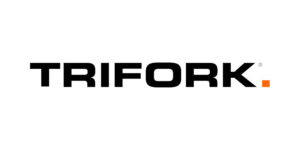Natixis erkender, at økonomien er ramt hårdt, og at der netop nu sker tilbageslag i coronakrisen, men finanshuset ser dog tegn på en holdbar forbedring i de kommende måneder. Nu er det ikke kun de store tech-selskaber, som klarer sig gennem krisen, men også nogle cykliske aktier. Store indeks-spillere er næsten upåvirket af coronakrisen. Natixis opstiller dog en risikoliste for tilbageslag for efteråret.
COVID-19 Dashboard: Actively Managing a Dynamic Risk Landscape
The COVID-19 pandemic has resulted in some of the most complex political, social, and economic challenges in at least a century, but our advice to investors as August begins is: Keep it simple.
A surge in cases throughout the southern and southwestern US through the summer and a spike in cases in parts of Europe and Asia are unlikely to result in a return to the worst days of the crisis.
Certain sectors of the US economy have incurred significant damages and will likely continue to languish. Elsewhere, we continue to see signs that the economy is moving into what could be a more durable recovery.
This is particularly true in less labor-intensive sectors and those less affected by social distancing measures – sectors like financial services, manufacturing, government, and health services – which make up a greater combined share of total gross output in the US.
Maintaining Risk Mindfulness
While the situation remains fluid, we believe as of late summer that unless we see things turn more dire – including an increase in COVID-19’s lethality or evidence of a renewed strain on healthcare systems – a measured nationwide reopening will continue through the end of the year and into 2021.
The experiences of early 2020 have the potential to help address and contain a significant second wave of cases in regions that have endured “hot spot” status, allowing for a gradual reopening and the establishment of a new way of life.
The stock market is not the economy. Large index players appear to be virtually unaffected by COVID-19, and they are likely large enough to play a role in holding up the broader market.
More importantly, strength has rotated from large tech firms and other immediate beneficiaries of the “new normal” economy to include more cyclically sensitive sectors, an important signal that the recovery in asset prices is indeed sustainable.
In addition, the number of the COVID-19 business closures could be contained in part by merger and acquisition activity in a world where distressed managers are looking to sell.
Market risks that we are continuing to watch include:
- Political partisanship around federal aid dollars for state and local governments.
As of early August, Congress is continuing to debate the shape and scope of an additional fiscal relief package for the general public, but how the federal government might alleviate pandemic-related budget shortfalls among state and local governments remains an open question. We estimate they will need some $550 billion to be made whole – and they have received no support thus far. State and local governments will need assistance in order for a sustained US economic recovery to continue. As the November 2020 election approaches, debates over aid dollars will likely remain contentious. - An unexpected and significant increase in fatality rates.
As discussed above, there is evidence that healthcare systems can handle large numbers of COVID-19 cases in terms of treatment. Nonetheless, evidence of increasing virus lethality has the potential to reverse hard-fought gains. - Consumers and business retrench.
The COVID-19 experience is unparalleled in a modern economy – nobody can say for sure how consumer spending might look coming out the other end of the crisis, or know in advance exactly how the allocation of capital on the part of businesses might change. Debates about data collection aside, a relatively improved employment picture since March is cause for optimism, and the slow but steady improvement in high frequency mobility and consumer spending data continues to point toward an economy on the path to recovery. - The liquidity backdrop tightens.
While it’s impossible to say exactly how or why this might happen, that it occurred at the beginning of the crisis served as a surprise for many. The Fed remains on high alert and is in “whatever it takes” mode to prevent a credit crunch from happening. The Fed’s actions have proven successful, and that’s commendable. In fact, we believe markets and investors may be continuing to underestimate the historic size and magnitude of the fiscal and monetary response to the COVID-19 pandemic worldwide.
Keeping Up the COVID-19 Fight
Plenty of unknowns remain, as do a multitude of risks. COVID-19 has drastically changed life as we know it. Still, much work has been done to answer the call, and this work continues. Regardless of whether or not you take a bull or bear perspective on the remainder of 2020, our guess is you’re doing so with a bit more humility and gratitude.









